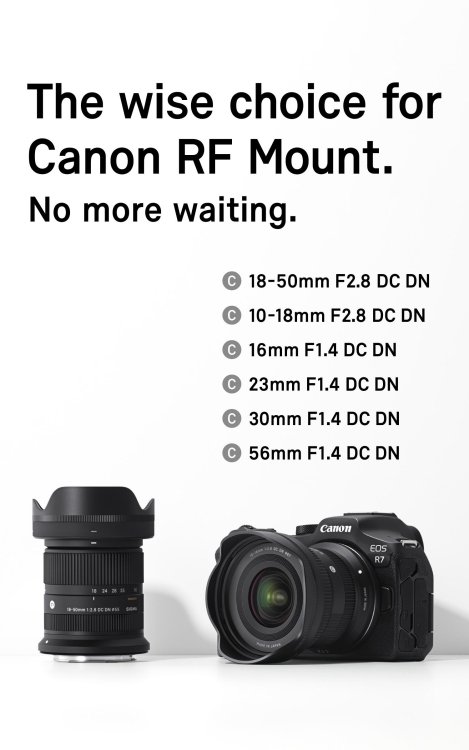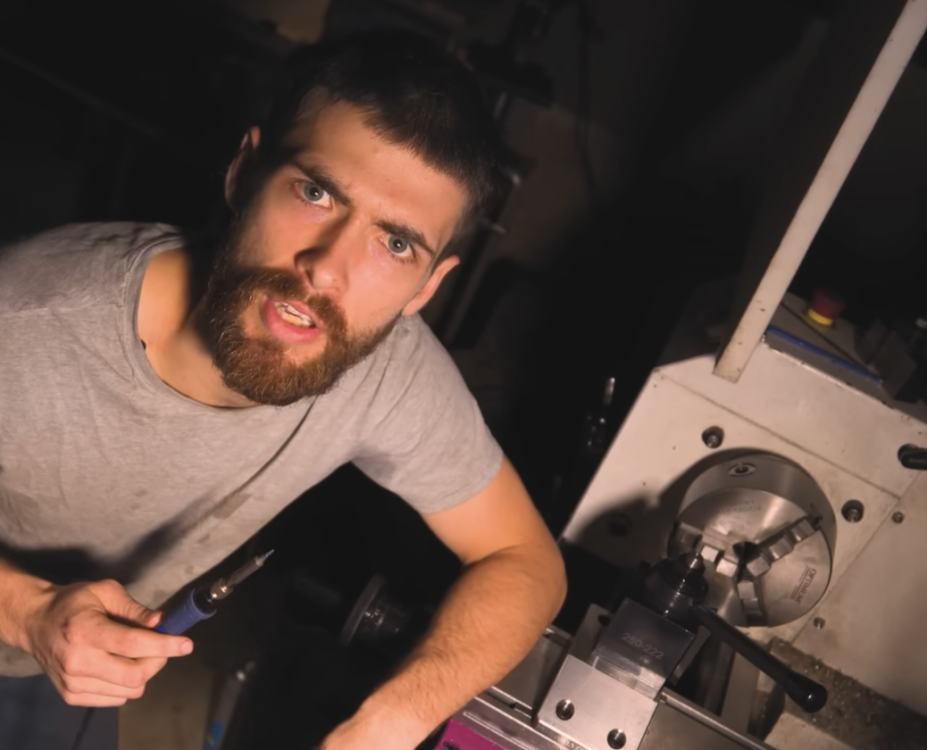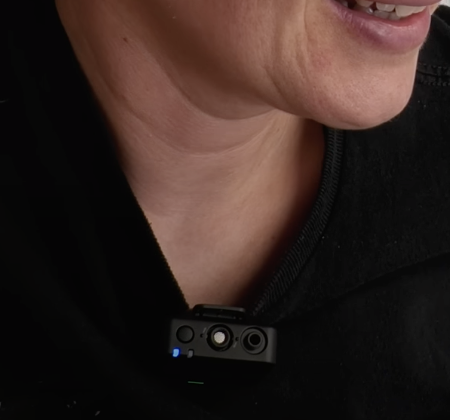Leaderboard
Popular Content
Showing content with the highest reputation on 04/23/2024 in all areas
-
I agree (having owned 10 of their hybrid cameras and 2 camcorders in the last 15 years). Panasonic has a long heritage in professional video (going back over 60 years) and it shows. I think the GH5 became a very popular camera for video because it was a good all-round, reliable, video tool in most situations, rather than excelling in any particular area at the expense of others or having a specific SOOC 'look'. For a bit of fun, this is 9 year old, basically SOOC, FHD 50p video from a Panasonic LX7 'enthusiast compact' with a small 10MP 1/1.7" sensor. There's some obvious aliasing/jaggies and I think the reds/oranges in particular are exaggerated. But for a camera launched in 2012 that fitted in the palm of one hand and weighed 270g I think it is reasonably decent (and could be improved in post). SOOC video from a G6, GX85 or G80 would leave it in the dust though, having much less aliasing and better balanced colours.2 points
-
Panasonic S5 II (What does Panasonic have up their sleeve?)
John Matthews reacted to ac6000cw for a topic
Definitely - it's why I like the way Olympus/OMDS IBIS operates on the OM-1 & E-M1 iii. When I use proDAD Mercalli for stabilisation in post I usually choose the 'Glide Cam' option, which gives a floatier feel with lower warping artefacts (and less cropping) than the default 'Universal Cam' setting.1 point -
Sigma have announced that they are releasing a range of RF mount lenses, indicating that Canon have softened their “no 3rd party lenses” stance. I say softened rather than abandoned as, whilst these lenses are fully licensed by them, they do not include any full frame lenses. At least for now. The initial offerings are the two f2.8 zooms and four f1.4 primes from Sigma’s Contemporary range that have been available in other mounts for a few years now. The 18-50mm is the first one that will be available but it is not until July and the others will follow in the Autumn. No word on prices but they are usually similar in different mounts so you can take that as a rough guide, although maybe there will be an additional cost on top for the official licensing from Canon. Good news for owners of crop RF cameras to have different options and also for people using the KOMODO (or maybe we should call it the NIKOMODO now). Full details here https://www.sigma-global.com/en/contents/sigma_rfmount_lenses/1 point
-
Color - SOOC vs. LUTs/Grading
SRV1981 reacted to KnightsFan for a topic
Post. I trust my calibrated monitor in a controlled room better than the one on set. So what I do with any new camera is I do a bunch of tests to find a setting that I like, then I shoot everything in that setting and adjust in post as needed. That way I am very familiar with what I can or can't do with that setting. I will often do tests to create specific color node graphs ahead of time, designed to be applied in post. But on the shoot I want everything to be familiar, even when I know based on my tests what it will transform into. That's not to say I'm good at cinematography. But I do think I'm good at not wasting people's time. I test everything ahead of time by myself or with the people leading the project, then we maximize set time for the actors and crew. No fiddling with settings while people are waiting around.1 point -
I wonder who these mics are actually for? I mean, influencers have gone away from hidden microphones in order to look authentic: and even people taking the piss out of them... The pros are going to actually mic people up properly. So, who is left? Is there some hidden niche of people who care about speed and also hiding the mic? My experience of the people that are just using the little matchbox sized mics is that they aren't trying to hide them either: Even the street-interview people aren't hiding them:1 point
-
Color - SOOC vs. LUTs/Grading
SRV1981 reacted to KnightsFan for a topic
What I like about recent Canon C line is that the skin often has a bit more separation from other colors. I don't know that I prefer red/magenta, but it's not nice if skin gets muddled with everything else. I wouldn't say all Canon, because I was honestly never a fan of the C100's image for the few shoots I used it on. I don't know that I especially like color on the Panasonic S-series as SOOC it tends to exaggerate yellows. It's a great camera and does what I need at an unbeatable price though.1 point -

Shooting a short
eatstoomuchjam reacted to kye for a topic
HA! I guess that goes to show that their target customers aren't the colourists then!!1 point -
I also have that. It was great and really well designed in terms of how the controller mapped to the functions and the workflow etc. It was fiddly though, that's for sure. The only limitation I found with it was that it couldn't do what I described above with pushing two adjustments against each other. Of course if you don't work that way, then it wouldn't matter. Comparing the number of controls it offered vs the dedicated BM panels was just insane - I really think that BM could make a killing changing their whole approach to the panels. Imagine if they made a more generic panel that had "pages" and could be switched between them. Let's imagine the entry-level one costs $1000 and can get to half-a-dozen pages. The amateur buys one panel, and switches between the pages, and life is good. The pro wants dedicated controls for everything without switching, so buys multiple panels and sets each one to a different page. The pro also buys the "pro" panel that costs $2000 and can access the other restricted panels. Later on the pro buys more pro panels. In the end the pro has spent as much as they would have buying the Advanced panel, so there's no loss of income for BM, and the pro gets a customisable surface where the controls go where they want. This can be configured in 2 minutes in shared spaces like colouring rooms. Of course. Interesting to learn you figured it out though. The only place online I could find anything on it their attempt failed. Maybe it failed due to fear of legal action rather than technical impenetrability, but interesting nonetheless.1 point
-
Great camera. It's cinema in a box the size of a pack of cigarettes. There's nothing wrong with video - technically it's what I do. One thing that is starting to be understood is the look of the footage, which with video often looks quite artificial, which is in contrast to film which looks quite organic. Artificial isn't a bad thing either - all styles are valid. My own preferences are for something that is aesthetically pleasing, mildly flattering, and doesn't call attention to itself. This has pushed me into investigating the whole subject and what "cinematic" actually means, which leads into the territory of YouTubers making cinematic videos that despite having huge amounts of effort and thousands of dollars of equipment are some of the least cinematic videos ever made, even when compared to something like a T2i. ...and you can install your own. Bingo! Instantly, you can have whatever look you want, SOOC. This is what I do. My current best answer is GX85, 14-140mm zoom, 12-35mm zoom, and 12-32mm zoom. If I'm not allowed to colour grade it, I'll edit it on a 720p timeline and export upscaling that timeline to 4K. That will knock the digital edge off it. Why? Because if your camera is large then you'll get beautiful images with lovely colour science and everyone in the background of those images will be staring at the camera. Oh darn it! There I go again, talking about something other than colour. It's like I'll never learn that there's no more to film-making than camera tests. C300mk2. Why? Go watch any video on why this is the most popular documentary camera. Rent an Alexa. If you want to understand why, go watch any video from a professional cinematographer or colourist talking about why Alexa is the best choice. Neither do I. Which is sort of the point I've been making all along. Alexas are known to be green, sometimes even problematically so. Canons are magenta. etc etc. If we're talking about choosing cameras for the best SOOC colour, and yet bizarrely there isn't any limitation on the fact that some cameras require 3 people to operate them, then I'm thinking that if you can put a LUT in the camera then it counts as being SOOC colour. Ironically, because it comes SOOC lol. In which case, you can choose Alexa 65 and just put a modified 250D / 2383 LUT in there and you're done! Alexas also tend to go green. There's a knob in any NLE that corrects this, but don't let 3s of work in post stop you from changing your entire set design around that one tiny little thing!1 point
-
Shooting a short
kye reacted to eatstoomuchjam for a topic
In general, the stills stuff is a really close match for the film stocks (differences in the production are tiny)... and we weren't talking about a small difference, especially in the greens. Meanwhile, FilmConvert and Fuji's own Velvia profile both look quite a bit like my slides. 😄 As you said, though, a lot of the people using it have never actually used the film stocks that it claims to emulate - and some of their emulations look nice. If you won't suffer cognitive dissonance from many of them not looking a lot like what they claim to be and/or want to use ACES as a starting point, it's a decent product. Unless something changed recently, FilmConvert really doesn't have a good story for ACES (I think that last time I checked, it was "transform out of ACES into something else, apply FilmConvert, and then transform back").1 point -
More examples of bad lighting. This was a 709 shot from my GF3, which obviously couldn't auto-WB far enough to compensate (yes, this looked white in person): My best attempt at grading in post also couldn't compensate well enough: But the real demonstration is on a project. Here's a camera test I shot. These are the images after grading: They all look pretty straight-forward, but it took a lot of work to get to that. Here are the shots SOOC: Note that adjacent shots have considerably different looks - SOOC: After: Obviously I've let the flaring lower the contrast on the middle images to a certain extent because otherwise it would look too forced, but the tint of the first image and second ones needed to be evened out as one had the sun in it and the other didn't. I've shot these tests by the beach many times, using many different cameras (OG BMPCC, BMMCC, GH5, GX85, XC10, GF3, iPhone, GoPro, etc), shooting manually and in auto, in RAW / LOG / 709, etc etc. All required decent amounts of work in post to even them out and look normal. It's like anything - the natural look takes the most amount of work and is, in reality, the least natural. You keep saying you want nice looking images without doing any/much work, but I've been working super hard at this for quite some years now and it's just not possible. You either get nice looking images with work, or you wave the camera around and you get out what you put in - a film that looks like a dad with a handycam. The myth that you can buy it was created by equipment manufacturers trying to sell you cameras and LUT bros on YT trying to sell their LUT packs.1 point








